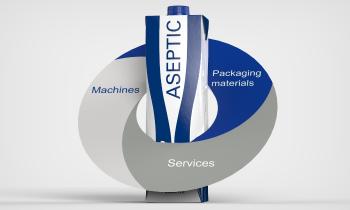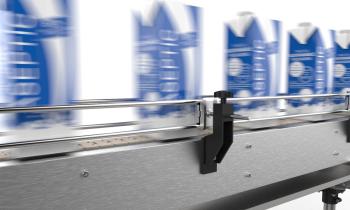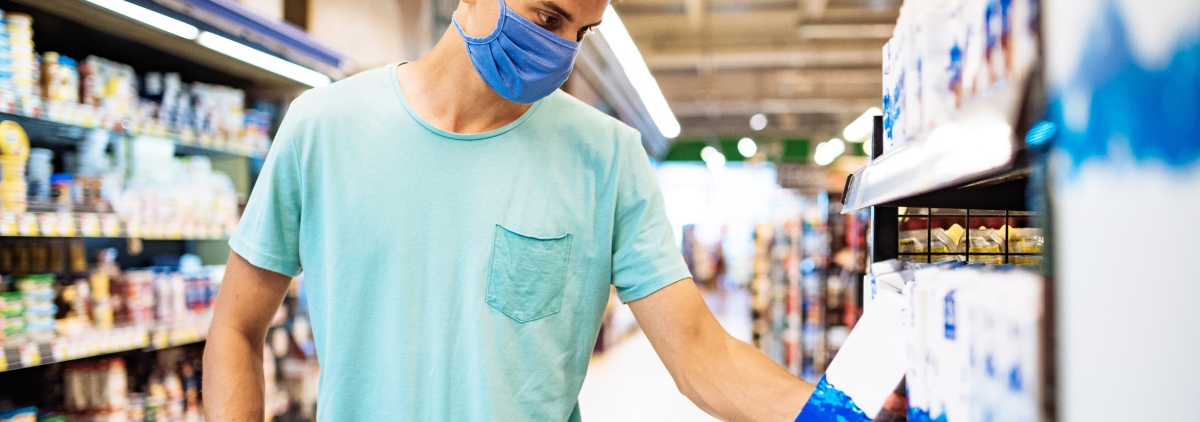How the aseptic packaging industry has risen to new highs under COVID-19
COVID-19 has drastically changed the purchasing habits of consumers all over the world. As soon as COVID-19 spread throughout Europe, food stockpiling became the norm in the US[1], EU and Asia[2]. Between February 26 and March 11, American's spending rose by 50%, then quickly declined in most categories except for grocery shopping. Where lockdowns were in place, grocery spending was three times bigger than the US average. Stay-at-home orders led to a 32 percent cut in restaurant spending, with wealthier, older people showing a much greater disposition towards stockpiling than younger, less fortunate ones[3].
Aside from the human toll, the impact of the pandemic has been dramatic. In the food & beverage industry the supply chain has taken the brunt of the blow. According to Resilience360, "The pandemic has exposed the vulnerabilities of an industry historically reliant on manual labor." Although the space is rapidly adjusting to a remote, automated world, most players were indeed unprepared for staffing shortages when the novel coronavirus hit. Panic buying, combined with plant closures and a global shortfall of cardboard[4] and polymers[5], led to price hikes in raw materials. Due to shelter-in-place restrictions, operational and labour costs also increased, resulting in inflated food prices[6]. At the same time, unsubstantiated claims of milk ingredients being useful against COVID-19 started spreading[7]. Despite the higher prices, the heightened concern about the virus and the fact the milk is naturally associated with hygiene were more than enough reasons to trigger a demand spike. This was not a temporary phenomenon. On the contrary, it was a shift in consumer behaviour throughout the globe, from short to longer shelf life and especially towards UHT milk[8]. Fortunately, the food industry was able to quickly adapt to the black swan, overcoming the harshest market conditions in modern history - a change that, ultimately, has led the packaging sector to new highs.
UHT milk: the link between COVID-19 and sterile packaging in aseptic carton
A prominent change in consumer trends has been the staggering increase in UHT milk consumption. As customers wanted to reduce the number of visits to point of sales, demand for longer shelf life UHT milk has ballooned[9] . For instance, the sale of dairy products such as ultra-heat treated (UTH) milk has seen an almost 20 percent rise in India, and by 279 percent globally[10].
The primary reason behind this fast and significant consumer shift is the longer shelf life and ease of use of UHT milk. Not only that: according to McKinsey, in the COVID-19 world any packaging solution needs to incorporate three must-haves: a good sustainability narrative; hygiene-focused design; a strong e-commerce presence and ship-ready design[11]. As an increasing number of products are sold online, packaging designs need an overhaul - even more so if they were meant for retail channels. This may result in updates to prevent product damage, improve customer experience or to boost productivity. In this regard, UHT milk represents a compelling value proposition. , It is produced through a sterilising, ultra-heat treatment and, being space-saving, it is much easier to stock and to transport. Also significant, where milk is sold in bulk dairy solutions have registered a switch of consumers from loose milk to packaged milk from the bigger brands. As it turns out, the sterile packaging process behind UHT milk has become more and more attractive during the pandemic at the expense of packaged fresh milk and bulk milk.
Lifestyle changes for beverages: juice packaging and dairy alternatives
Online consumption keeps rising. Delivery platforms such as Instacart, Walmart, Grocery and Shipt have witnessed significant spikes in sales[12]. In light of this, consumption has also changed: while 32% gained weight during the lockdown, 15% moved to healthier options, such as dairy alternatives made of carton packaging or juice[13].
According to Nielsen, amid the first four weeks ending on March 28, 2020, US retail sales of orange juice jumped by a whopping 38% year over year, resulting in a jump in juice packaging. The increase largely involved the "100% orange juice" category - a product that is historically correlated with the flu season. Interestingly, the move signs a trend reversal, as per capita availability, which serves as a proxy for consumption, has gradually fallen in the last two decades - from 6.1 gallons in 1998 to 2.5 gallons in 2018[14].
Another option gaining ground is vegan solution. Among those who have been giving up on meat, a popular alternative is almond milk (42%), soya milk (36%), with 54% and 42% of those who have tried soy milk and almond milk saying they will make them a regular purchase even after the end of shelter-in-place orders[15].
As far as dairy alternatives and juice packaging are concerned, a great plus of bricks is their ease of use and practicality. Not only do bricks have a longer shelf life, they can also be conveniently stockpiled at home - plus, they are not as fragile as glass, can be folded after consumption and, last but not least, are lightweight.
Why IPI aseptic packaging is an enticing opportunity in the time of COVID-19
It is unquestionable that COVID-19 has changed the packaging world. Sustainability, despite remaining an industry-shaping trend, is not a relevant driver as it was before. Safety is a much greater concern: with hygiene becoming increasingly relevant in today's life, consumer preferences are rapidly evolving towards long shelf life and sterile packaging, which, ironically, is also a sustainable option. In this context, aseptic carton packaging is undoubtedly a winner. The meticulous aseptic sterilisation process, the ease of use of carton bricks, the eco-friendly packaging material have all made the fortune of the category. As a matter of fact, UHT milk and juice are on the rise and dairy beverage alternatives are gaining traction. Due to evolving market needs, an efficient, reliable and high-quality aseptic carton packaging machine is more and more crucial by the day.
IPI is a leading supplier of one-stop solutions for aseptic carton packaging for the liquid food and beverage industry. For more than 40 years, IPI has been providing innovative aseptic packaging materials, cutting-edge filling machines and tailored technical support, and currently operates in 50 countries.
IPI fillers are optimised for beverages and liquid food products - especially dairy and plant-based milk, juice, wine, broth and tomato sauce. Designed to guarantee flexibility to adapt to ever-shifting consumer trends, IPI packaging machines deliver in terms of high-speed performance without making any compromises on simplicity and reliability. Not just high-speed, though: the company’s aseptic lines are versatile and suited for both low and high production volumes (niche and large-scale). Indeed, IPI ensures market-ready solutions for either single packaging lines or large turnkey projects. What’s more, IPI packaging materials are high-quality and, thanks to their multilayer structure and the company’s strict quality assurance protocols, they are able to preserve the organoleptic properties for as long as 12 months at room temperature, keeping the products safe, fresh and flavor without the need for refrigeration or preservatives.
If you are looking for a solid partner with specialised know-how in aseptic carton packaging, look no further. Contact us: we will be happy to show you our dedicated solutions and work at your side to help you solve your issues.
[1] Source:USA Today
[2] Source:Irish Times
[3] Source:Kellogg Insight
[4] Source:Packaging Europe
[5] Source:MRW
[6] Source:Mitchell Republic
[7] Source:Reuters
[8] Source:Markets and Markets
[9] Source:Economic Times
[10] Source:Research and Markets
[11] Source:McKinsey
[12] Source:Spoonshot Engineering & Data Science
[13] Source:Consumer Reports
[14] Source:CNN
[15] Source:The Vegan Society
 ASEPTIC SOLUTIONS PROVIDER
ASEPTIC SOLUTIONS PROVIDER
 FILLING EQUIPMENT
FILLING EQUIPMENT
